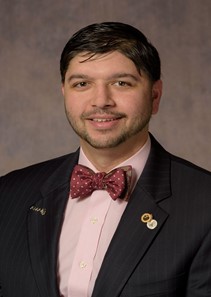BMT/CAR-T Fellowships: What Fellows Want to Know




Articles in Hematopoiesis are written for trainees by trainees, under the oversight of the ASH Trainee Council. The material published in Hematopoiesis is for informational purposes only. The opinions of the authors are their own and do not necessarily represent the official policy of the American Society of Hematology. ASH does not recommend or endorse any specific tests, physicians, products, procedures, or opinions, and disclaims any representation, warranty, or guarantee as to the same. Reliance on the information provided in this publication is solely at your risk.
| Important: If you started a BMT/CAR-T fellowship between 2012 and 2021, please fill out our brief IRB-approved anonymous survey. Please forward this link to friends and colleagues who have completed such fellowships. Thank you in advance for your help! |
 It should be no surprise that most topics for our “What Fellows Need to Know” series in Hematopoiesis have involved advanced cellular therapies such as chimeric antigen receptor T-cell (CAR-T) therapy, indications for hematopoietic cell transplantation (HCT), and toxicities of allogeneic HCT. For this installment, we will focus on the advanced fellowships dedicated to training physicians in such treatment modalities.
It should be no surprise that most topics for our “What Fellows Need to Know” series in Hematopoiesis have involved advanced cellular therapies such as chimeric antigen receptor T-cell (CAR-T) therapy, indications for hematopoietic cell transplantation (HCT), and toxicities of allogeneic HCT. For this installment, we will focus on the advanced fellowships dedicated to training physicians in such treatment modalities.
These fellowships go by many names, including bone marrow transplantation/chimeric antigen receptor T-cell (BMT/CAR-T) fellowships, transplant fellowships, and immune effector cell (IEC) fellowships, among others. In this article, we provide some basic information covering the what, when, where, and why (or why not) pertaining to these fellowships. There are a few guiding principles but great heterogeneity in how these fellowships are organized.
What do BMT/CAR-T fellowships cover?
All BMT/CAR-T fellowships share two features. First, they focus on some combination of autologous HCT, allogeneic HCT, and/or IEC therapies such as CAR-T therapy. Second, as of May 2022, none of them have been accredited by the Accreditation Council for Graduate Medical Education (ACGME). As such, the American Society for Transplantation and Cellular Therapy (ASTCT) recently published ACGME-style training guidelines for such fellowships. Table 1 shows a sample schedule structure as adapted from these guidelines.
Table 1. Suggested Framework for a BMT/CAR-T Fellowship
| Inpatient-focused months | 3-4 months total |
| Clinic-focused months | 3-4 months total |
| Research-focused months | 3-4 months total |
| Laboratory experiences (apheresis facilities, stem cell procurement, HLA typing, cytogenetics lab) | 0.5-1 month total |
| Related rotations (palliative care, transplant ID) | 0.5-1 month total |
Adapted from ASTCT guidelines.1
Abbreviations: HLA, human leukocyte antigen; ID, infectious diseases
The collective goal of these components is to educate trainees regarding the nuances and complexities of managing cellular therapies. This includes patient selection, therapeutic decisions (e.g., types of HCT conditioning and specific CAR-T products), management of toxicities (e.g., graft-versus-host disease or cytokine release syndrome), and management of clinical BMT/CAR-T logistics and operations in general. However, partly because of a lack of standardization, fellowships can vary significantly in terms of relative emphasis on each component.
When and where can fellows do BMT/CAR-T fellowships?
These advanced fellowships (or “super-fellowships,” as you may have heard them be called) are intended to be completed after hematology/oncology (heme/onc) training in the adult or pediatric setting. While most trainees pursue such fellowships immediately after their heme/onc training, others may return years later to gain more clinical experience with cellular therapies; a few may even do this fellowship first (before their heme/onc fellowship) to gain clinical and research experience.
Regarding where, most BMT/CAR-T fellowships are offered at high-volume centers with a critical mass of both relevant patients and clinical mentors. As of May 2022, we are unaware of the existence of an up-to-date listing of such fellowships in the United States. Interested physicians can learn about specific fellowships through web searches, perusing Twitter, or speaking to recent BMT/CAR-T fellows (including us).
Why (or why not) should someone do a BMT/CAR-T fellowship?
And here it is, the why — not quite the million-dollar question per se, but at least a six-digit salary’s worth of controversy. In general, professional societies like the National Marrow Donor Program have suggested that BMT/CAR-T fellowships may help with maintaining a physician workforce in these fields.2 That being said, several Twitter discussions have demonstrated that the benefit-risk ratio of an added year of training versus an added year of trainee-level pay remains controversial.3,4 In general, some very general pro and con observations are noted in Table 2.
Table 2. General Pros and Cons of BMT/CAR-T Fellowships
| Pros | Cons | |
| Clinical training | Detailed immersion into the care of BMT/CAR-T recipients, with the opportunity to build a broad base of expertise and skills | Given the ubiquity of center-specific practices, on-the-job learning as a new attending might be more efficient and offer higher pay |
| Professional development | Access to research mentorship and resources of a high-volume center | Research is not imperative for a career in BMT/CAR-T therapy |
| Scope of practice | As of 2022, advanced fellowships are uniformly required to be considered for careers in solid organ transplantation* | As of 2022, the fields of HCT and CAR-T therapy do not uniformly require this type of training† |
*For example, in cardiac transplantation5 and liver transplantation.6
†Anecdotally, these fellowships are viewed favorably for positions in transplantation or cellular therapy. The authors are aware of two recent job listings that required either a BMT/CAR-T fellowship or a one-year instructor position focused on BMT/CAR-T therapy.
Why is Table 2 so vague?
In brief, the decision to pursue a BMT/CAR-T fellowship is an intensely personal one. If you’re interested in a career in transplantation and/or cellular therapy, start talking to your mentors about the pros and cons of BMT/CAR-T fellowships as they pertain to you. Other factors may affect your decision as well, such as how much clinical and research exposure you had to BMT/CAR-T therapy as a categorical heme/onc fellow, your geographic preferences and the relative availability of faculty positions there, specific visa requirements, and more. An increasing number of centers now offer disease-specific advanced fellowships (e.g., in lymphoma or myeloma), which may potentially be a better fit for you. Lastly, for those of you who are interested in lab-based careers, advanced fellowships focused on the science of CAR-T manufacturing are also available (Perelman School of Medicine and University of California San Francisco).
One potential starting point is to review the ASTCT’s training guidelines1 and see how interested and comfortable you feel about their suggested learning milestones. If you’re considering a specific BMT/CAR-T fellowship, be sure to ask about the breakdown of inpatient versus outpatient time as well as the breakdown of clinical versus research time. Anecdotally, we have found that these vary greatly between programs. If you would like any advice about the above considerations, please don’t hesitate to reach out to any of the authors.
Help us learn about the current state of BMT/CAR-T fellowships
As you can see, there are a lot of data we don’t have regarding BMT/CAR-T fellowships, including a comprehensive listing of such fellowships, an understanding of why physicians pursue such fellowships, and most importantly, a sense of their experiences and ultimate impressions. As such, please send this survey to everyone you know who started a BMT/CAR-T fellowship within the past 10 years. These results — including the whens, wheres, and whys — will be published and shared broadly to help current and future cell therapy physicians. Thank you for your time!
Acknowledgments: The authors wish to acknowledge Aaron Logan, MD, PhD, and Navneet Majhail, MD, MS, for mentorship and guidance with this survey-based study. The authors also wish to thank the ASH Trainee Council for the opportunity to publicize this survey.
- Jain T, Knight T, Alencar MC, et al. American Society for Transplantation and Cellular Therapy Guidelines for Fellowship Training in Hematopoietic Cell Transplantation and Immune Effector cell Therapy. Transplant Cell Ther. 2022;28:125-133.
- Majhail NS, Murphy EA, Denzen EM, et al. The National Marrow Donor Program’s Symposium on Hematopoietic Cell Transplantation in 2020: a health care resource and infrastructure assessment. Biol Blood Marrow Transplant. 2012;18:172-182.
- Murthy HS. Twitter thread. 2020.
- Kelkar A. Twitter thread. 2022.
- Adamson PB, Abraham WT, Love C, et al. The evolving challenge of chronic heart failure management: a call for a new curriculum for training heart failure specialists. J Am Coll Cardiol. 2004;44:1354-1357.
- Harring TR, Thao T Nguyen N, Liu H, et al. Liver transplant fellowship and resident training is not a part of the “July effect”. J Surg Res. 2013;182:1-5.